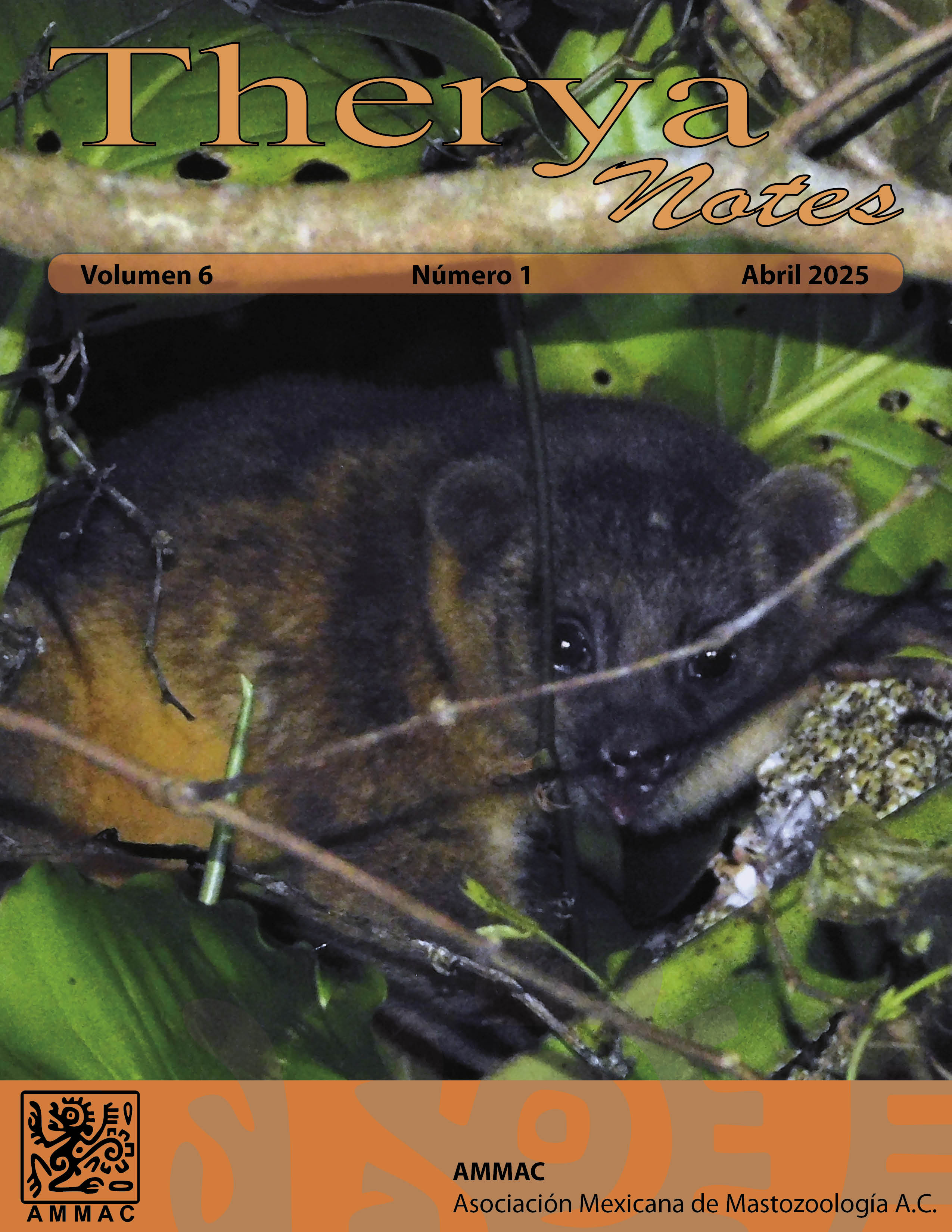First record of ocelot Leopardus pardalis in a pine-oak forest of the Sierra Madre Occidental, Durango, México
DOI:
https://doi.org/10.12933/therya_notes-25-191Keywords:
Camera traps, feline, new record, pine-oak forest, Sierra Madre OccidentalAbstract
The ocelot, Leopardus pardalis, is one of the 6 species of felines distributed in México. It is currently listed as Endangered of Extinction according to NOM-059-SEMARNAT-2010. Therefore, this work aimed to report the presence of the ocelot in the ejido Chavarría Nuevo, Durango, México. A random sampling was carried out in a pine-oak forest in the ejido Chavarría Nuevo, Pueblo Nuevo, Durango, using camera traps. Eight cameras were installed, and the sampling effort was calculated as the number of camera traps multiplied by the number of days sampled (1,200 trap-days). Separate photographs recorded several animal species; however, the ocelot was captured only in 4 photographs. Based on the time of the day when the photographs were captured, in addition to the size and body constitution, the photographs were identified as belonging to the same individual; however, the sex could not be determined. In mammal monitoring studies, this is the first record of ocelot in the study region, an area of great importance regarding forest use in México. The presence of this species suggests that the forest is in good health, as in these areas the presence of the feline is mainly associated with its feeding on prey such as rabbits, badgers, and birds.
Downloads
Published
How to Cite
Issue
Section
License
THERYA NOTES is based on its open access policy allowing free download of the complete contents of the magazine in digital format. It also authorizes the author to place the article in the format published by the magazine on your personal website, or in an open access repository, distribute copies of the article published in electronic or printed format that the author deems appropriate, and reuse part or whole article in own articles or future books, giving the corresponding credits. The Creative Commons CC BY-NC-SD license is used.![]()















